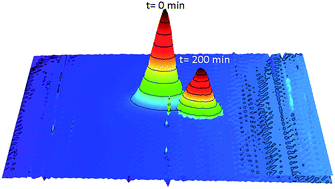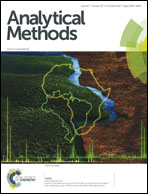Single-cell migration as studied by scanning electrochemical microscopy†
Abstract
Scanning electrochemical microscopy (SECM) was used to study the migration of single live head and neck cancer cells (SCC25). The newly developed graphite paste ultramicroelectrode (UME) showed significantly less fouling in comparison to a 10 μm Pt-UME and thus could be used to monitor and track the migration pattern of a single cell. We also used SECM probe scan curves to measure the morphology (height and diameter) of a single live cancer cell during cellular migration and determined these dimensions to be 11 ± 4 μm and 40 ± 10 μm, respectively. The migration study revealed that cells within the same cell line had a heterogeneous migration pattern (migration and stationary) with an estimated migration speed of 8 ± 3 μm h−1. However, serum-starved synchronized cells of the same line were found to have a non-heterogeneous cellular migration pattern with a speed of 9 ± 3 μm h−1. Thus, this non-invasive SECM-based technique could potentially be expanded to other cell lines to study cellular biomechanics for an improved understanding of the structure–function relationship at the level of a single cell.

- This article is part of the themed collection: Emerging Investigators

 Please wait while we load your content...
Please wait while we load your content...